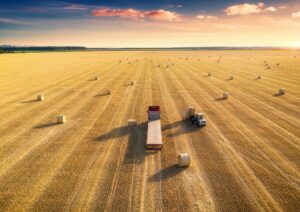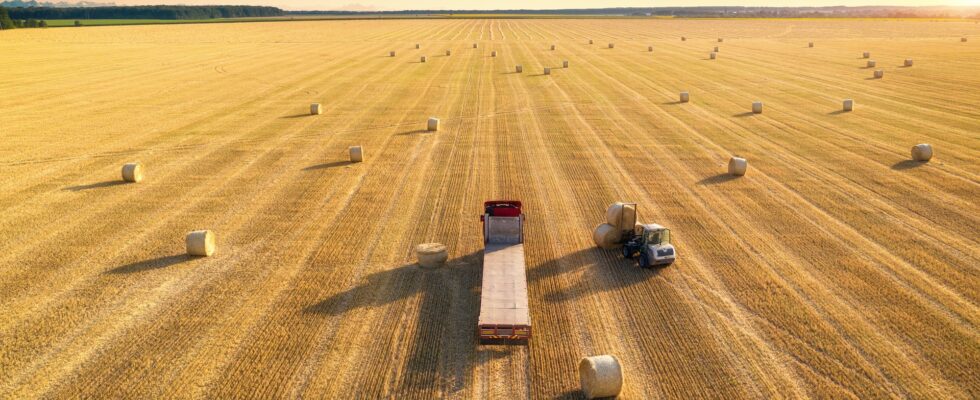
Sustainable food production is critical to address global hunger, poverty, and food security. This is especially pertinent as the UN predicts that the global population will reach a staggering 9.7 millionby 2050 with an estimated 60% more food needed to feed this burgeoning population.
Climate change is also putting enormous pressure on food systems. The World Bank estimated that the number of people struggling with food shortages increased from 135 million in 2019 to 345 million in June 2022, fuelled by the pandemic, supply chain disruptions, and the ongoing war in Ukraine. Consequently, the need to establish robust food systems that support sustainable agricultural production and food supply chains has never been greater.
This is why, despite a softening investment market in 2023, agtech still presents a fertile long-term opportunity for investors. The global agtech market value is set to accelerate from $12.4 billion in 2020 to $34.1 billion by 2026 with AgFunder partner Manual Gonzalez recently discussing how agtech that sought to “solve big problems” would continue to see solid investment.
Australia has played a pivotal role in supporting the global agriculture industry through investments in IoT and smart farming to streamline farm operations and improve food production with farmers adopting innovative technologies like robotics and AI for monitoring and management. While this is encouraging, there is room to tap digitalisation even further to address the most pressing issues facing the industry, and these present ideal opportunities for investors.
Cutting off emissions at the pass
As climate tipping points are likely to be crossed in the near future, the industry, and arguably the world, will need agtech companies to keep innovating to find solutions to address sustainability concerns. Technological advancements will be necessary to reduce agri-based greenhouse gas emissions, including nitrous oxide and methane from livestock farming.
For investors, this presents a bright spot for businesses that are looking to reduce their overall carbon footprint. The potential of this investment space is massive with Bill Gates recently investing in Perth-based start-up Rumin8 which is creating a dietary supplement to reduce methane from cow burps. Meanwhile, NSW-based carbon-farming start-up — Loam Bio — is working to put agriculture at the forefront of addressing climate change. It secured $105 million in a Series B round earlier this year to promote soil carbon sequestration.
Farm and supply chain management software is on the rise
Another area to watch out for is farm management software, which witnessed a surge in investment in 2022. The farm management software market size was valued at $1.82 billion in 2020 but is projected to reach $5.48 billion by 2028. The technology of this nature optimises processes by reducing waste, and improving efficiency, ultimately leading to cost savings while data gathered within these systems helps to maintain the quality of an agricultural product, boost food provenance, aid in decisions around scalability, and drive up profitability.
Just this year, management software startups have seen some enormous wins. British SaaS platform Hectare raised $20 million in Series A funding to offer crop and livestock farmers insights on trading, inventory and logistics. Meanwhile, US-based GrainChain, which utilises blockchain and IoT technology to digitise the agricultural supply chain raised $29 million in funding.
Agtech shooting for the stars
Related to food security on Earth, moves are already being made to move agriculture to space as a result of a rapidly growing population and shrinking agricultural land. Space-based technologies such as crop monitoring from space-based observatories with satellite imagery and computing capabilities are no longer wishful thinking. They are rapidly becoming commonplace agricultural practices to predict yields for specific crops.
For instance, researchers based in Melbourne’s Docklands are working with the space agency NASA to design plants that can be grown on Mars and the moon. While it may seem far-fetched, the Gaia Project Australia is already making great strides to boost crop output using less water, power, and nutrients. As an investor, it might be worth getting in on the bottom floor of the burgeoning space agriculture sector now.
It may be difficult to ascertain the immediate benefits of some of these innovations but agriculture is a long-term industry, and investments do take time to mature. As Australian agtech gains even more momentum, investing in early-stage startups could deliver promising prospects for investors, despite short-term fluctuations in the market.
A supportive government, along with a collaborative ecosystem comprising of startups, accelerators, and incubators, could deliver a bumper crop for agtech investors in the future while ensuring Australia’s agricultural industry is in a pole position.
Remo Carbone is the CEO of MEQ Probe
This article was first published by Smart Company
